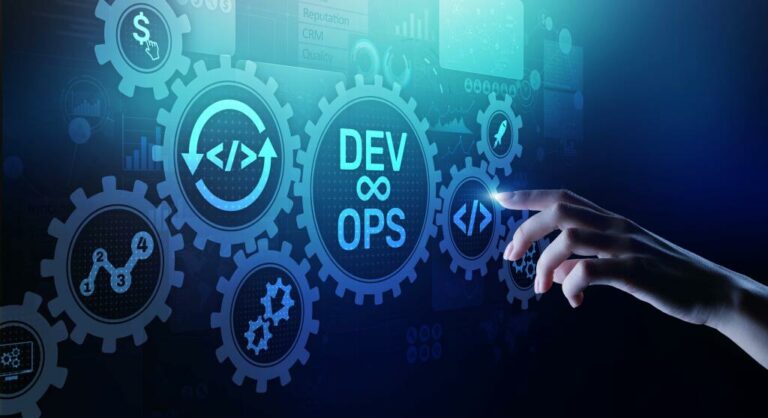- Sorularınız mı var?
What is DevSecOps? Development, Security, Operations
In this blog post, we’ll explore how cloud-native is changing developer experience and how your organization can make the leap to become an elite cloud-native performance. The 2023 Global Threat Report highlights some of the most prolific and advanced cyber threat actors around the world. DevSecOps is also an emerging area where cross-functional experience and skills are likely going to pay off on the job market, too.

DevSecOps aims to apply security, including scanning, monitoring, and remediation, across the SDLC. This encompasses all phases—from planning, developing, building, testing, through to release, deployment, ongoing operations and updates. This helps reduce the costs of security and compliance, and allows organizations to deliver secure software more quickly.
By organization type
To effectively implement DevSecOps means to embrace DevOps and integrate security into the full CI/CD development pipeline. Developers, operations teams, and security experts should work together to define the tools and processes that work best for them, given their skill sets and the technology ecosystems. Allowing teams to build the environment and to define the process helps to improve motivation, making them invested stakeholders. Data protection—detecting and classifying sensitive data, providing enhanced security controls to improve regulatory compliance, and setting up monitoring and auditing capabilities. Access controls start in development and testing environments, preventing compromise that might lead to supply chain attacks, and extend to production environments, to defend against service disruption and data exfiltration.

Each application security test looked only at that application, and often only at the source code of that application. This made it hard for anyone to have an organization-wide view of security issues, or to understand any of the software risks in the context of the production environment. Cybersecurity testing can be integrated into an automated test suite for operations teams if devsecops software development an organization uses acontinuous integration/continuous deliverypipeline to ship their software. Additionally, better collaboration between development, security, and operations teams improves an organization’s response to incidences and problems when they occur. DevSecOps practices reduce the time to patch vulnerabilities and free up security teams to focus on higher value work.
DevOps Security
Therefore, organizations need to address the security concerns around the use of such technologies. Because developers are often too busy to review open source code, it’s important to implement automated processes to manage open source code as well as other third-party tools and technologies. For example, utilities such as the Open Web Application Security Project’s Zed Attack Proxy can check for vulnerabilities in code that depends on open source components. DevSecOps is an approach that combines application development, security, operations and infrastructure as code in an automated continuous integration/continuous delivery (CI/CD) pipeline.

SAST tools scan proprietary or custom code for coding errors and design flaws that could lead to exploitable weaknesses. SAST tools, such as Coverity®, are used primarily during the code, build, and development phases of the SDLC. Visibilityis a good management practice in general, but very important for a DevSecOps environment. DevSecOps should be the natural incorporation of security controls into your development, delivery, and operational processes.
What are the challenges when enabling DevSecOps?
This becomes more efficient and cost-effective since integrated security cuts out duplicative reviews and unnecessary rebuilds, resulting in more secure code. Now, in the collaborative framework of DevOps, security is a shared responsibility integrated from end to end. It’s a mindset that is so important, it led some to coin the term “DevSecOps” to emphasize the need to build a security foundation into DevOps initiatives. We cannot afford for security checks to be the final piece of the development puzzle. When security flaws aren’t discovered until the 11th hour or after release, you will have reputational and financial damage—as too many businesses have demonstrated, to their peril. Positioned as the incorporation of security controls into your development and operational processes, DevSecOps is less a button you push as it is a process to be introduced at eve…
- Traceabilityallows you to track configuration items across the development cycle to where requirements are implemented in the code.
- It encourages the integration of security into the work that software developers and IT engineers perform.
- Today, rapid development cycles increase the pressure on teams to refresh and update everything from mobile apps to major enterprise applicationsfrequently, sometimes in a matter of days.
- It’s a good idea to gather resources from multiple sources to provide guidance.
- DevSecOps integrates security auditing and penetration testing into agile development.
- Project management – Build a backlog of projects and break them down into smaller, trackable tasks with project management tools like Scrum, Lean, Kanban, GitHub Issues, and Jira.
Security was often relegated to post-production or was handled by external teams that held up production releases. Ultimately DevOps – and therefore DevSecOps – are as much about culture as they are about the tools and processes that enable rapid, frequent delivery of software. If you want to embed security into the SDLC, creating a culture of shared responsibility https://globalcloudteam.com/ rather than targeted blame is key. Static application security testing tools perform static code analysis to check your source code for known security flaws, such as buffer overflows and SQL injection opportunities. Because static analysis is run on the source code, it can be run early in the CI/CD pipeline, as soon as changes have been committed.
Open source
If you think you need to recruit certain people with magical coding skills for DevSecOps, then you’re mistaken. Unless you can’t train your existing people effectively or your developers aren’t interested in making the DevSecOps shift, you don’t have to put on your hiring cap just yet. Your development team, which is comprised of people with different skill sets, will receive training on DevSecOps processes and methodologies that should hold well throughout your delivery pipeline.

The pragmatic approach to API security is to get close to the code, instrumenting every stack layer. Some products work at the network, host, application, container, and API layers. Businesses get sued and have their brand image harmed due to security flaws in their software, jeopardizing customer information. DevSecOps ensures that security is a norm rather than an afterthought, guaranteeing that developers always develop with application security in mind.
Best practices for supporting a DevSecOps team
Logging can inform you about what types of attack vectors and systems are being targeted. Threat intelligence informs threat modeling and security architecture processes. To achieve DevSecOps efficiency, you need security tests that eliminate false positives and false negatives, and provide useful information to your remediation team. PDF, 464 KB IT Automation Powered by AI Download the IBM Cloud® infographic that shows the benefits of AI-powered automation for IT operations. Future-proof your IT Operations with AI Access an exclusive Gartner analyst report and learn how AI for IT improves business outcomes, leads to increased revenue, and lowers both cost and risk for organizations. Gartner predicted that, through 2020, 95% of cloud breaches would result from the customer’s action or inaction.
DevSecOps Principles and Key Steps for Securing the CI/CD Pipeline – hackernoon.com
DevSecOps Principles and Key Steps for Securing the CI/CD Pipeline.
Posted: Tue, 16 May 2023 01:32:04 GMT [source]
The concept of an SCA tool is for it to scan source code, as well as binaries, to see if vulnerabilities exist. Known vulnerabilities are present far too common during the lifecycle of an application. Open source and third-party components may house these vulnerabilities, creating opportunities for exploitation by cybercriminals. The SCA tools will allow for integration as part of a continuous deployment pipeline to identify known vulnerabilities continuously. As soon as the code is checked in these tools can scan your code for any potential vulnerability. This can help to ensure that the code is safe to run and reduces the risk of data breaches.
Save Time
This ensures the organization doesn’t bite off more than it can chew, especially at the initial stages of DevSecOps implementation. Security issues can bog down developers with fixing time-consuming bugs that would have been easier to resolve if discovered earlier in the process. DevSecOps minimizes or eliminates these bottlenecks, streamlining security by making it easier to resolve. Not only does this approach reduce the frequency and severity of security issues, but it also cuts costs. DevOps practices work to share responsibilities more evenly and reduce finger-pointing and toxicity.